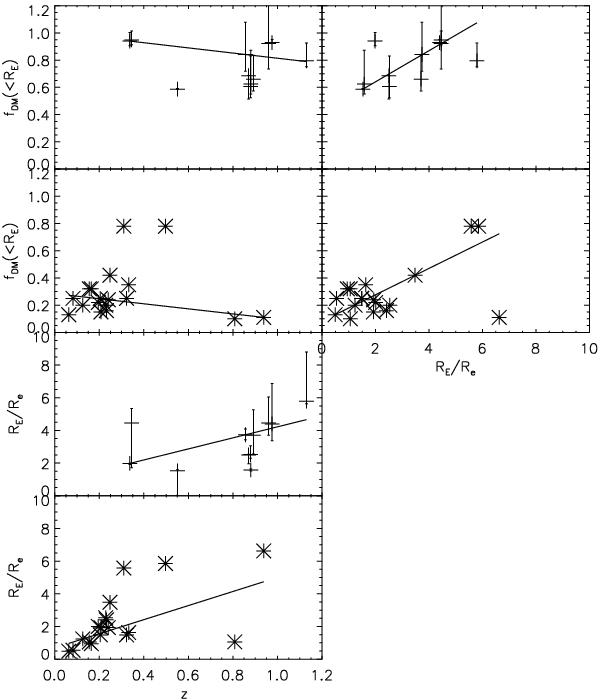Fig. 6

Evolution of the dark matter fraction and related parameters for two lens samples: COSMOS (crosses) and JK07 (stars). Top left panels: evolution of the DM fraction in the Einstein radius with the redshift. The least-deviation fits are displayed (solid lines), and follow the relations fDM(<RE) = −0.18 × z + 1.00 for COSMOS and fDM(<RE) = −0.18 × z + 0.38 for JK07. Top right panels: variation of the DM fraction as function of the ratio of the Einstein radius versus effective radius. The least-deviation fits give the following relations:  (COSMOS) and
(COSMOS) and  (JK07). Bottom panels: evolution with redshift of the Einstein radius versus effective radius. The least-deviation fits give the following relations:
(JK07). Bottom panels: evolution with redshift of the Einstein radius versus effective radius. The least-deviation fits give the following relations:  (COSMOS) and
(COSMOS) and  (JK07). For JK07, we report the results obtained for galaxy models without adiabatic compression. The slopes are similar for models with adiabatic compression.
(JK07). For JK07, we report the results obtained for galaxy models without adiabatic compression. The slopes are similar for models with adiabatic compression.
Current usage metrics show cumulative count of Article Views (full-text article views including HTML views, PDF and ePub downloads, according to the available data) and Abstracts Views on Vision4Press platform.
Data correspond to usage on the plateform after 2015. The current usage metrics is available 48-96 hours after online publication and is updated daily on week days.
Initial download of the metrics may take a while.


